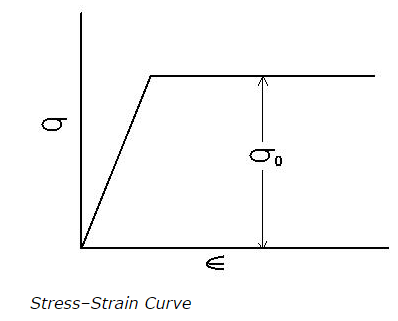Manufacturing and Industrial Engineering - GATE practice papers - Mechanical
Here, you can read Manufacturing and Industrial Engineering multiple choice questions and answers with explanation.
1) Which type of material is difficult to spot weld? (Marks: 02)
- Published on 19 Oct 15
a. highly resistive materials
b. highly conductive materials
c. both a. and b.
d. none of the above
|
Answer
Explanation
|
ANSWER: highly conductive materials
Explanation:
Spot welding requires maximum resistance at the surface of two parts to be joined. Thus spot welding process is difficult for highly conductive materials
|
|
2) Why is the copper suitable to use as filler for joining iron and silver? (Marks: 02)
- Published on 19 Oct 15
a. copper is soluble in iron
b. copper is soluble in silver
c. both a. and b.
d. none of the above
|
Answer
Explanation
|
ANSWER: both a. and b.
Explanation:
The filler material should be soluble in both of the materials which are going to be joined. As copper is soluble in iron as well as in silver, it is suitable as filler for joining iron and silver.
|
|
3) Which process is best suitable to increase strength of material and to decrease ductility after processing? (Marks: 02)
- Published on 19 Oct 15
a. Hot working
b. Cold working
c. both a. and b.
d. none of the above
|
Answer
Explanation
|
ANSWER: Cold working
Explanation:
The material grains are permanently distorted in cold working process. The material strength increases and ductility decreases in cold working process.
|
|
4) What is the effect of cold working process on material grains? (Marks: 02)
- Published on 19 Oct 15
a. material grains distort permanently
b. material grains distort temporarily and again come back to original shape slowly
c. material grains remains as it is
d. can't say
|
Answer
Explanation
|
ANSWER: material grains distort permanently
Explanation:
There is no crystallization takes place in cold working process. Material is processed mechanically below crystallization temperature. Thus material grains are permanently distorted.
|
|
5) What is the effect of hot working process on material density? (Marks: 02)
- Published on 19 Oct 15
a. material density decreases in hot working process
b. material density increases in hot working process
c. material density remains same in hot working process
d. unpredictable
|
Answer
Explanation
|
ANSWER: material density increases in hot working process
Explanation:
Any pores or cavity in the cast metal disappear in hot working process. This results in increase in material density.
|
|
6) Which of the following is NOT a type of hot working?(Marks: 01)
- Published on 19 Oct 15
a. Rolling
b. Pipe welding
c. Forging
d. none of the above
|
Answer
Explanation
|
ANSWER: none of the above
Explanation:
All the given processes are types of hot working.
|
|
7) Which is the material represented in below stress-strain curve? (Marks: 02)

- Published on 19 Oct 15
a. Rigid ideal plastic material
b. Ideal plastic material with elastic region
c. Ideal elastic material
d. none of the above
|
Answer
Explanation
|
ANSWER: Ideal plastic material with elastic region
Explanation:
In above diagram, the material behaves elastically at certain point and after that it behaves as ideal plastic material. Thus it is an ideal plastic material with elastic region.
|
|
8) The forming process in which the working temperature is lower than the recrystallization temperature is called as ________(Marks: 01)
- Published on 19 Oct 15
a. hot forming
b. cold forming
c. crystalline forming
d. none of the above
|
Answer
Explanation
|
ANSWER: cold forming
Explanation:
In cold working or cold forming the plastic deformation of metal is carried out at the temperature below recrystallization temperature.
|
|
9) What is the cause of formation of blow holes in metal casting? (Marks: 02)
- Published on 19 Oct 15
a. excessive moisture
b. presence of such ingredients which produce gas
c. fine grains
d. all of the above
|
Answer
Explanation
|
ANSWER: all of the above
Explanation:
Blow holes appear as cavities in the casting. They are the entrapped bubbles of gases caused by excessive moisture, gas producing ingredients as well as fine grains.
|
|